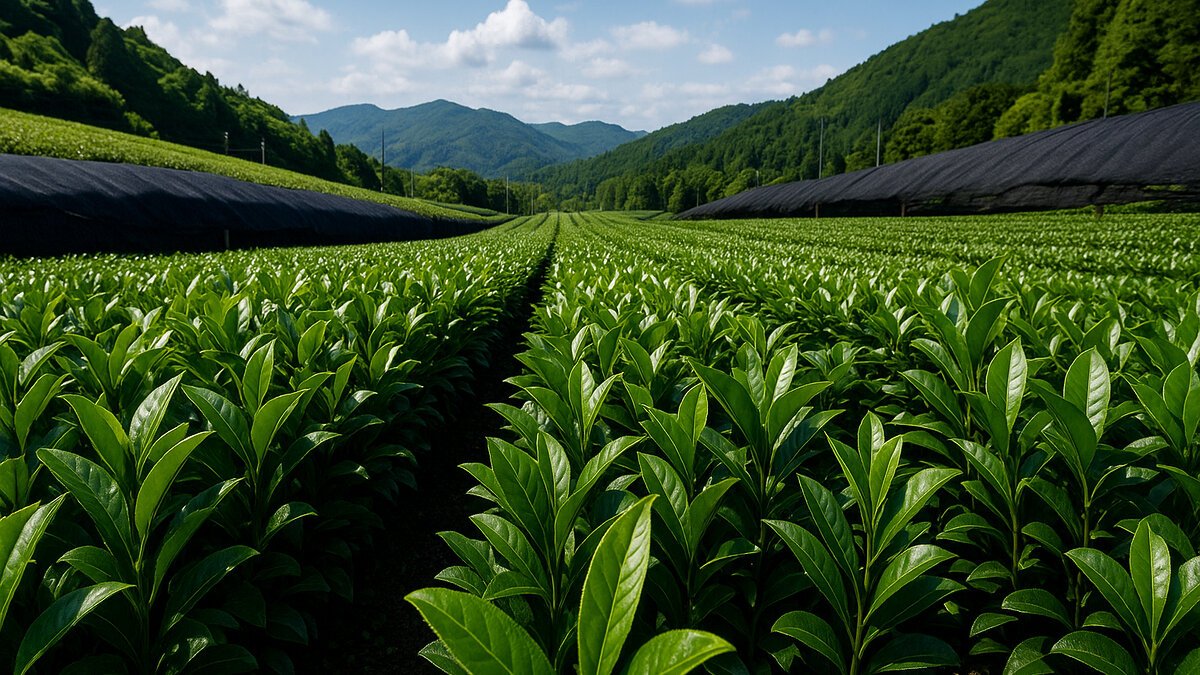Matcha Shortage is gripping the world as demand for Japan’s vibrant green tea skyrockets. From Starbucks matcha lattes in London to Krispy Kreme doughnuts in Singapore, matcha tea has evolved from a centuries-old Japanese tradition into a global lifestyle symbol — but this craze is draining supplies, pushing matcha prices higher, and reshaping the future of Japanese green tea.
Social media has accelerated the boom. TikTok’s #MatchaTok hashtag has gained tens of millions of views, with influencers showing frothy lattes, desserts, and brewing tips. “Some cafés are even asking for a kilo a day,” says Lauren Purvis, founder of Oregon-based Mizuba Tea Co. “What used to last a month now runs out in days — a clear sign of the growing matcha demand.”
Matcha Shortage Puts Ancient Tea Tradition Under Pressure
Matcha isn’t just another tea trend; it’s the product of a delicate, centuries-old process. Farmers cultivate tencha leaves under shade for weeks, enhancing their deep color and signature umami flavor. Once harvested, they are steamed, dried, and stone-ground — producing just 40 grams of matcha tea an hour.
But this artisanal craft is now strained. Heatwaves in Kyoto, which produces a quarter of Japan’s tencha, have damaged crops. The Matcha Shortage is made worse by Japan’s aging farming population; too few young farmers are entering the demanding tea trade.
Shops in Uji, Kyoto’s matcha hub, now limit sales — only one tin per customer. Kyoto’s Camellia Tea Ceremony has doubled its visitors, but director Atsuko Mori admits: “We want the world to enjoy Japanese green tea, but our shelves empty as soon as they’re stocked.”
Rising Matcha Prices and Global Trade Tensions
As demand explodes, matcha prices have surged. Tokyo’s Chazen Tea Ceremony chain raised prices by 30% this year. Tea master Rie Takeda says the growing matcha demand is good for cultural awareness, but financially challenging.
Adding to the strain, a new US-Japan trade deal imposes a 15% tariff on imports, including matcha tea.
“As Japanese tea isn’t grown in the US, there’s no domestic industry to protect,” says Lauren Purvis. “Specialty tea like this should be exempt.”
Fearing price hikes, American buyers rushed to stock up, sending orders at Mizuba Tea Co. up by 70% in early July.

A Call for Mindful Consumption Amid the Matcha Shortage
The Matcha Shortage has sparked a new movement for mindful tea drinking. Japanese tea masters are urging consumers not to waste ceremonial-grade matcha tea in lattes or cakes, where its delicate flavor disappears.
“It’s sad to see premium matcha stockpiled or used in desserts,” says Atsuko Mori.
The Global Japanese Tea Association recommends using lower-grade matcha for cooking, reserving the highest-grade Japanese green tea for traditional rituals. This protects both the craft and the culture of matcha.
Will the Matcha Shortage Calm Down?
Despite the challenges, there’s some optimism. Japan’s agricultural ministry reports matcha tea production has nearly tripled since 2010, and green tea exports rose 25% last year, valued at ¥36.4 billion ($250 million).
Industry experts believe the matcha shortage will stabilize. Masahiro Nagata, co-founder of Matcha Tokyo, says: “Low-quality matcha is selling for a high price now, but that won’t last. The market will balance itself in two to three years.”
For now, the world’s matcha demand continues to surge — a success story that also warns of what happens when an ancient tradition collides with global trends.

AryaLekh (DoFollow) :
- Avatar Fire and Ash Full Story and History of the Third Avatar Film – 2025
- Divya Deshmukh Creates History: Wins FIDE Women’s Chess World Cup, Becomes India’s 88th Grandmaster
- Chitrakoot Tourism: Best Places – A Complete Guide to the Spiritual & Natural Wonders of the Ramayana Land 2025
- चित्रकूट पर्यटन: सर्वश्रेष्ठ स्थल – रामायण नगरी की सम्पूर्ण महिमा, संस्कृति व प्राकृतिक सौंदर्य की Complete Guide in 2025
- युवाओं की चुनौती : नाराज़गी और उम्मीद की जंग
- Asia Cup 2025: UAE to Host the Historic T20 Cricket Showdown from September 9 to 28
- माँ-बेटी का रिश्ता: एक प्रेरणादायक और भावनात्मक मार्गदर्शन जो शिक्षा, संस्कार और समाज को बदलने की ताकत रखता है |
- भारत में पुनर्योजी खेती: तकनीक, टिकाऊ तरीकों और सरकारी योजनाओं से बदलती कृषि की दिशा
- Digital Tech and Youth Minds: 10 Shocking Truths — Digital Power or Digital Trap?
- Saiyaara Movie: A Poetic Love That Crossed Borders and Broke Hearts



